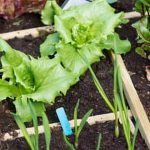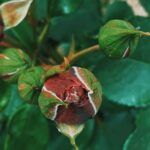Introduction
Crabgrass can be a major problem in the vegetable garden, as it can rapidly crowd out other vegetables, herbs, and flowers. It is classified as an annual grass meaning that it is particularly hardy and likely to survive in the most difficult of conditions such as drought, heat and patches of shade. In addition, it can produce thousands of seeds that provide new generations of weeds. Furthermore, many herbicides will not work to control it because crabgrass has a waxy cuticle layer which repels water-soluble substances like herbicides.
Given the severity of this weed problem for vegetable gardens, we need to find ways to kill it without using potentially harmful chemical solutions. There are several methods for controlling crabgrass organically without herbicides or pesticides that may prove successful in your garden.
One way to kill crabgrass naturally is to cultivate or spade up the area around plants frequently but shallowly throughout the season; this exposes weed seedlings to birds who feed on them. Also, hand-pulling is effective when done regularly; use gardening gloves and pull roots along with tops of crabgrass plants. Areas showing heavy infestations can be tilled in early spring before any other vegetation appears; this helps prevent germination by breaking up any compaction around weeds. Mulching well will help discourage emergence and growth because crabgrass requires direct sunlight for germination. Covering areas with light covers such as shade cloth or burlap should also help limit recurrence over time. Finally, mowing tall growing grasses before they have a chance to produce seed heads should stop their re-growth from previous year plants; repeated mowing helps eliminate these remains if necessary
Identifying Crabgrass and Assessing Damage
Crabgrass is an aggressive weed that can take over your vegetable garden and choke out other plants. It has light green blades with tight, compact seed heads that can be very noticeable in the lawn or garden. To effectively fight crabgrass, you need to identify it, diagnose the damage it causes, and determine what kind of damage control measures are necessary.
Once you have identified crabsgrass, assess how much of a problem it is in your garden. Take a look around and see if any plants seem to be struggling more than they should. If the weed has invaded on a large scale, there may be root problems extending into your vegetable bed, or competition for resources like soil nutrients or sunshine. To get an accurate understanding of the crabgrass’ impact on nearby vegetation, comb through your bed and inspect the health of each individual plant. From there, you can determine how much or why certain areas are being out-competed by this weed and what kinds of drastic measures need to be taken next. Finally, evaluate the current level of damage caused by crabgrass before formulating a plan to fight back against this troublesome pest.
Exploring Chemical and Non-Chemical Options
Chemical: To kill crabgrass in a vegetable garden, herbicides are commonly used. Herbicides can be both pre-emergent and post-emergent, with post-emergent ones being used to remove existing weeds and pre-emergents reversing the growth of new seeds that haven’t yet sprouted. However, since many chemical herbicides might also have an effect on your vegetables, it is advisable to read all instructions carefully before applying them. Additionally, you can use nonselective herbicides for a more general weed control as opposed to specifically targeting the crabgrass.
Non-Chemical: One way to tackle crabgrass organically is by performing mechanical cultivation so as to disrupt the soil and germination of crabgrass seeds. Keep weeding regularly until all signs of the unwanted plant have disappeared from your garden area. It has been suggested that cedar oil diluted with water can provide effective control against crabgrass. Alternatively, introducing other plants with stronger root systems into your garden plot may act as competition against the weeds and make it difficult for them to spread further in your plot. Finally, you might also consider adding mulch or hay around your vegetables so that they grow undisturbed while competing effectively against marauding weeds such as crabgrass.
Non-Chemical Strategies for Killing Crabgrass
Non-chemical strategies for killing crabgrass can be an effective and safe way when trying to control crabgrass in a vegetable garden. One of the most simple ways is by using physical removal, such as hoeing or hand-pulling, as soon as the weed begins to emerge from the soil. If needed, bring a tarp along to throw over the plants after they have been pulled out. This will prevent them from re-seeding themselves. Additionally, it is important to promptly dispose of any crabgrass pulled up in trash bags or burned if permitted.
Another way to kill crabgrass is by improving soil health in order to reduce weed competition. Adequate sunlight access can also inhibit their growth and spreading seed heads. Always make sure that there are no thin areas where weeds may be able to sprout. Lastly, keeping a healthy lawn by making sure it is receiving proper water and mowing at height best suited for the specific grass species can help choke out weeds like crabgrass before they get a chance to fully develop.
Establishing Plantings to Outcompete Crabgrass
The best way to eliminate crabgrass in a vegetable garden is by creating an environment in which your vegetables can outcompete the weed. Plant your vegetables thickly together so that there is no room for crabgrass to grow. Pay attention to the size of each plant and rotate vegetables that growth at different heights and densities, like tomatoes and lettuces, throughout your garden bed.. Mulch helps keep the ground moist, but again it should be limited and have a few inches of space away from the base of each plant to allow airflow and avoid diseases. When you water your garden, try not to get too much water near the roots or leaves of the vegetable plants as this can encourage crabgrass seeds to germinate. Finally, check regularly for weeds developing in between rows or around other vegetation and remove them early before they become much larger.
Species-Specific Tips for Keeping You Garden Weed Free
Crabgrass is a prolific weed that’s notoriously difficult to eradicate—which explains why it’s essential to practice preventive measures and routines if you want to keep your vegetable garden free from this nuisance. Specifically, you can mulch the region with a 3-inch layer of a biodegradable material such as straw or grass clippings. Not only will this reduce moisture evaporation from the soil, but it also helps control soil temperature swings. You may also want to consider planting certain ground covers such as white clover or English daisy during midsummer when crabgrass is most antagonistic. Furthermore, proper garden maintenance and vigilantly removing weeds can help redistribute resources away from crabgrass and towards other desirable plants. As a last resort, pre-emergent herbicides can be used on young crabgrass seedlings before they mature; however, these should be avoided in gardens that grow edible crops.
Conclusion
In order to have a successful vegetable garden, it is important to eliminate crabgrass. This can be achieved through a variety of methods such as pre-emergent application, regularly mowing the lawn, and hand-pulling any visible crabs. To get rid of existing crabgrass in the vegetable garden, one can use either a selective or a non-selective herbicide. It is best practice to apply these herbicides according to the instructions provided by the manufacturer in order to ensure safety for your vegetables and plants as well as safety for yourself. Once you have eliminated crabgrass from your vegetable garden, you are ready for the next steps of achieving the perfect vegetable garden: adequate fertilizing, weeding, and providing soil amendment when needed. With these steps combined, one can create an efficient and high-yielding vegetable garden.

If you’re looking to get into vegetable gardening, or are just looking for some tips on how to make your current garden better, then you’ve come to the right place! My name is Ethel and I have been gardening for years. In this blog, I’m going to share with you some of my best tips on how to create a successful vegetable garden.





